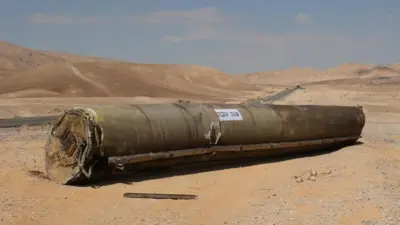We've updated our Privacy and Cookies Policy
We've made some important changes to our Privacy and Cookies Policy and we want you to know what this means for you and your data.
Majority of BP spill 'dealt with'
Almost three-quarters of the oil spilled in the Gulf of Mexico has been cleaned up or broken down by natural forces, the US government has said.
A government says only a quarter of the oil from the BP well remains and that it is "degrading quickly".
The majority has been captured, burned off or evaporated, it states. But more clean-up is necessary, officials warn.
Meanwhile, the government has cleared BP to cement the blown oil well, one of the final steps required to seal it.
The clearance from US Incident Commander retired Coast Guard Admiral Thad Allen came after the British-based oil giant announced "encouraging" progress on its "static kill" effort to seal the leak.
BP Senior Vice-President Kent Wells said on Wednesday afternoon the company had finished pumping mud from the Gulf surface into the ruptured oil well.
He told reporters the pressure from the oil bursting out of the ruptured well was being matched by the mud pumped from the surface, a "static" condition that leaves it ready for an injection of cement.
The company will continue drilling a relief well to intersect with the damaged well. When that well is complete later this month, BP could pump more mud and cement into the bottom of the damaged well.
Meanwhile, US President Barack Obama said on Wednesday he was pleased that the operation in the Gulf was "finally close to coming to an end".
"Our recovery efforts, though, will continue. We have to reverse the damage that's been done," he said.
'Not a threat'
The report on the fate of the spilt oil was compiled by 25 of "the best government and independent scientists", the National Oceanic and Atmosphere Administration (NOAA) said.
About a quarter of the oil released by the well evaporated or dissolved in the Gulf in the same way sugar dissolves in water, federal officials said.
Another one-sixth naturally dispersed when leaking out of the well, and an additional one-sixth was burned, skimmed, or dispersed using chemicals.
At a press conference, NOAA administrator Dr Jane Lubchenco said degraded oil was not a threat any longer because "when it is biodegraded it ends up being water and carbon dioxide so if it has been biodegraded, if it is gone, then it is not a threat".
However, nearly 53m gallons (200m litres) of oil remain in Gulf waters, which is close to five times the amount of the 11m-gallon Exxon Valdez spill in 1989.
Speaking on the ABC television network, White House energy adviser Ms Browner said: "The scientists are telling us about 25% was not captured or evaporated or taken care of by mother nature."
She said the inter-agency report was "encouraging", but added that further clean-up effort was necessary.
The report said it was unlikely beaches along the Gulf of Mexico would be covered by surfacing oil in the future.
However, Ms Browner warned the region might continue to be affected by the spill.
"Mother nature will continue to break it down. But some of it may come on shore, as weathered tar balls. And those will be cleaned up. They can be cleaned up. And we will make sure they are cleaned up," Ms Browner said.
Ms Lubchenco agreed, saying: "Less oil on the surface does not mean that there isn't oil still in the water column or that our beaches and marshes aren't still at risk."
Hurricane threat
Efforts to kill the well are becoming increasingly urgent as hurricane season advances in the Gulf.
Oil began flowing into the Gulf after an explosion on the Deepwater Horizon drilling rig in April. Eleven workers were killed in the blast.
The leaking oil was stopped on 15 July when BP closed a new cap it placed on the leaking well.
An estimated 4.9m barrels of oil leaked into the waters of the Gulf during 87 days, with only 800,000 barrels being captured.
Top Stories
More to explore
Most read
Content is not available








